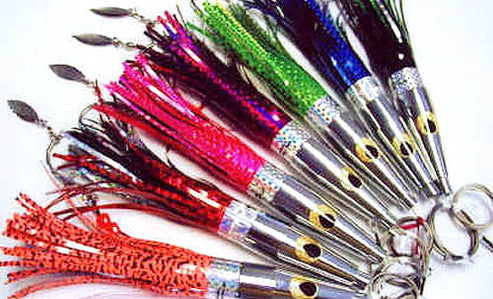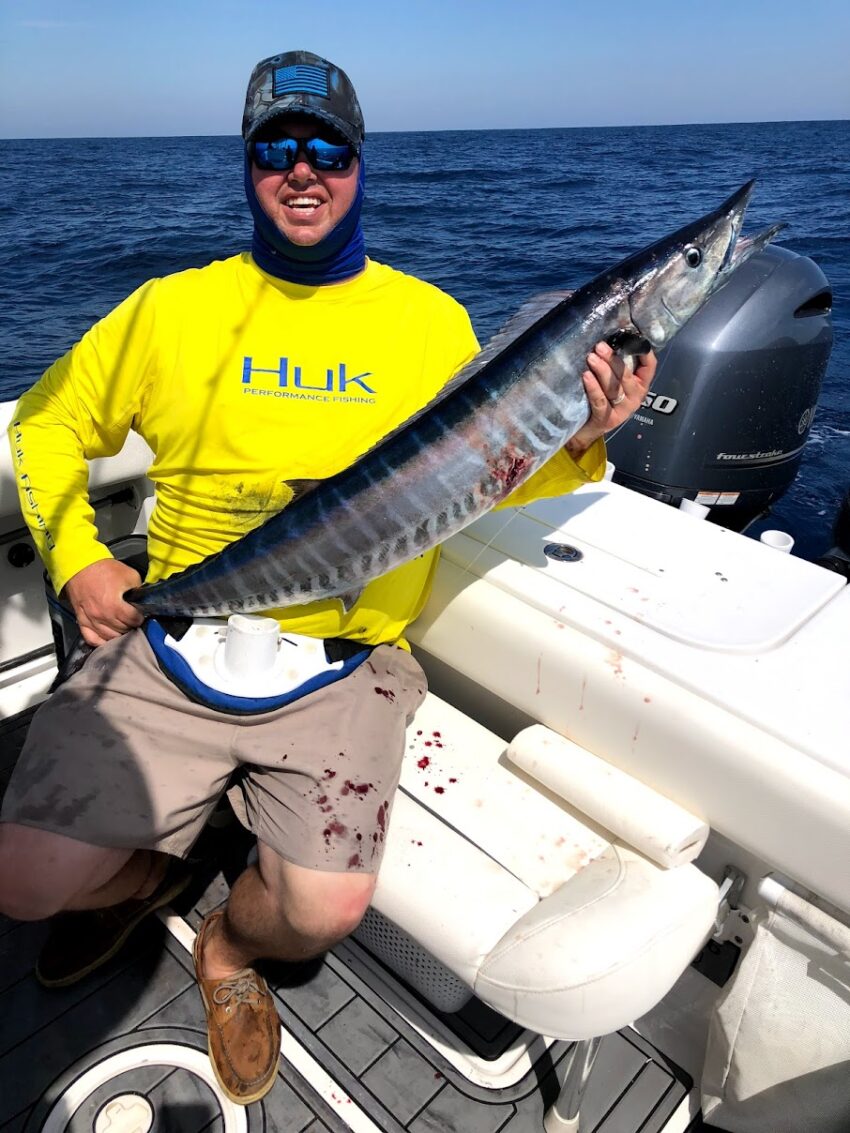Wahoo—one of the fastest, hardest-hitting fish in the ocean—is a top prize for offshore anglers in Florida. Known for their blistering runs, razor-sharp teeth, and firm, white meat, these fish are as exciting to catch as they are delicious on the grill. However, they’re also elusive and require the right strategy to consistently put them in the boat. Whether you’re targeting them off the Treasure Coast, Palm Beach, or making a run to the Bahamas, understanding their habits and fine-tuning your approach will give you the edge.
Best Time of Year to Catch Wahoo in Florida
While wahoo can be caught year-round in Florida’s deep blue waters, certain seasons bring peak opportunities. Winter, particularly from December through February, is prime wahoo time along the Atlantic coast. Cold fronts push schools of bait into deeper waters, and the wahoo follow, making them more concentrated and easier to target. The strong currents of the Gulf Stream, especially off Palm Beach and down through the Florida Keys, create ideal hunting grounds.
The fall months, from September through November, also produce solid wahoo action, especially around the full and new moons, when these fish tend to feed more aggressively. If you can plan your trip around these lunar cycles, you’ll significantly increase your chances of a hookup. During the summer months, wahoo fishing slows down a bit, but they’re still around, usually deeper in the water column. Many summer catches happen while high-speed trolling between offshore spots or when fishing structure like wrecks and ledges.
Where to Find Wahoo in Florida
Location is everything when targeting wahoo. One of the best areas in the state is the Palm Beach coast, where deep water is close to shore, and the Gulf Stream brings a steady supply of baitfish. The Florida Keys also hold big wahoo, especially along the offshore humps and deep drop-offs. If you’re willing to make the run, a day trip to the Bahamas can be well worth it, particularly around Bimini and Grand Bahama, where wahoo fishing can be world-class.
Other top locations include the Space Coast, where Cape Canaveral and Sebastian Inlet provide access to deep ledges that hold wahoo, and the Florida Panhandle, where anglers target them near oil rigs and offshore reefs. In general, anywhere with steep ledges, temperature breaks, or floating debris is a prime spot to hunt for these speedsters.
How to Improve Your Odds of Catching Wahoo

1. High-Speed Trolling for Wahoo
If you’re serious about catching wahoo, high-speed trolling is one of the most effective techniques. Unlike traditional trolling for mahi or sailfish, wahoo prefer fast-moving bait, and you’ll need to step up your speed to 12-18 knots to get their attention. To keep your lures running at the right depth, use heavy trolling weights (24-48 oz) or planers to get them down into the strike zone.
Lure selection is critical. Brightly colored bullet head lures (espcially the ballhood lures pictured above sold by Paradise Tackle), especially in pink, purple, and black, are proven wahoo killers. Ilander-style skirts rigged with ballyhoo also work well, providing both flash and scent to attract fish. Running a spread of 3-5 lines at varying depths helps cover more water and increases your odds of a double or even triple hookup.
2. The Right Moon Phase Matters
Serious wahoo fishermen pay close attention to the moon. Wahoo tend to bite more aggressively around the full and new moons, so planning your trip around these periods can make a huge difference. During these phases, strong tides and current shifts often trigger feeding frenzies, giving you a better shot at multiple hook-ups.
3. Don’t Skip the Wire Leaders
Wahoo have razor-sharp teeth that can slice through monofilament and fluorocarbon in an instant. Using a #7 to #9 wire leader (90-120 lb test) will prevent most bite-offs while keeping your bait swimming naturally. Crimping your connections rather than tying knots provides a stronger setup, reducing the risk of losing a big fish.
4. Target Structure and Temperature Breaks
Wahoo love structure, especially offshore ledges, reefs, and wrecks. In Florida, they’re often found around areas where the ocean floor drops from 100 to 400 feet, providing ambush points where they can strike passing bait. Floating debris, weed lines, and temperature breaks (where cooler and warmer water meet) are also hot spots. The best way to find these locations is to use Strike Lines Charts, their 3D Imaging of the sea floor are a game changer and reduce the amount of fuel used while searching. The ideal water temperature for wahoo is between 72-78°F, so if you find a break in this range, there’s a good chance wahoo are nearby.
5. Be Ready for a Fight
Once a wahoo hits, be prepared for a lightning-fast first run. They will peel drag at an insane rate, often heading straight down. A tight drag is essential, but don’t over-tighten, as their violent head shakes can easily rip the hook free. Using a high-speed reel (6:1 or higher gear ratio) helps keep tension on the fish, reducing the chance of it shaking loose.
Final Thoughts
Wahoo fishing is one of the most exciting experiences offshore anglers can have. Their speed, power, and aggressive strikes make them a challenge, but with the right techniques, you can consistently put them in the boat. By fishing the right seasons, using high-speed trolling, and targeting structure and moon phases, you’ll increase your chances of landing one of these prized fish. Whether you’re working the deep ledges off Palm Beach, trolling the wrecks of the Keys, or making a run to the Bahamas, being prepared and having the right gear will put you in the game for an epic wahoo bite.
Tight lines and screaming drags! 🎣🔥
👉 For more fishing tips, tactics, and gear recommendations, check out FishBehavin.com and follow us on social media!

